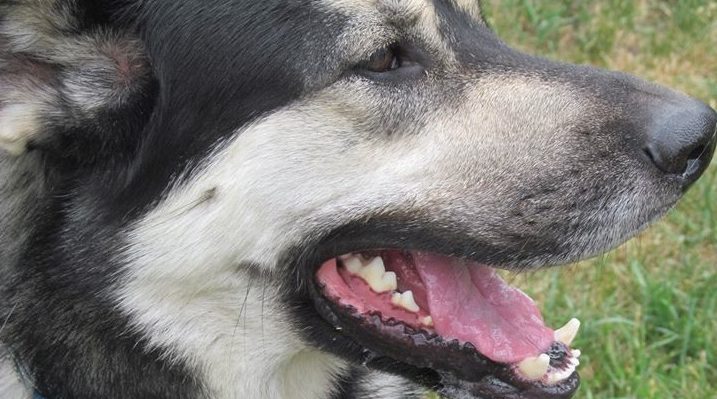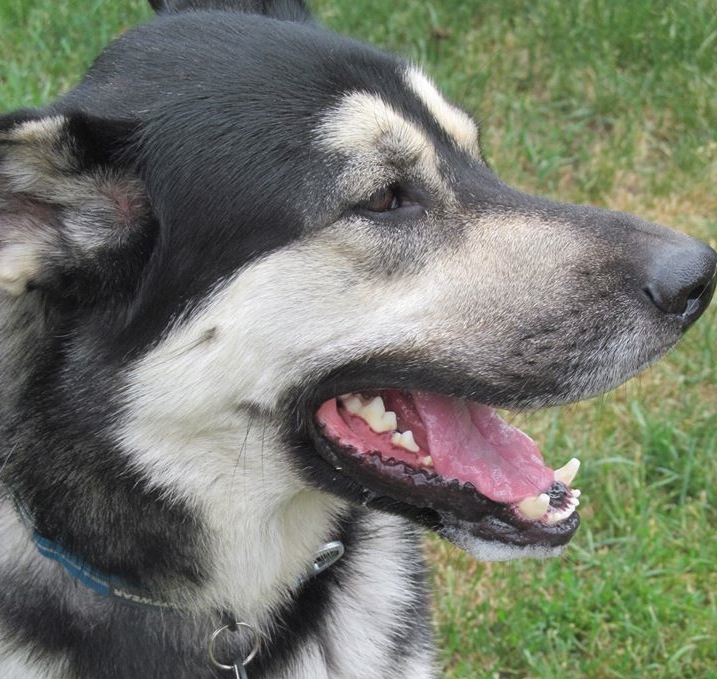
Last week, I suggested you make a list of everything your dog finds rewarding, including not only physical objects like toys or treats, but also “experiences” that your dog enjoys. I asked that you then put that list in order, as best you could, from most valued rewards down to least valued rewards (from the dog’s point of view). For example, in food treats, your dog probably finds a single piece of her kibble okay and she will eat it, but it’s certainly nowhere nearly as rewarding as, say, a bite of cooked chicken, turkey hot dog, or steak, which she will gobble with delight.
Experiences can also be rated. Every dog is different. Your dog may love a belly-scratching but may not enjoy a belly-fur comb-out. One experience is rewarding; the other is at best awkward or, at worst, downright unpleasant, no matter how you strive to make it less so. Going on a walk may be wonderful, but going on a walk to a favorite place or with a favorite friend, dog or human? That could be even more higher on some dogs’ lists. It’s important to know your dog!
This week, consider the objects that your dog “steals”—items that she has somehow accessed but which she should not have. Stolen food from the counter, stolen shoes from the closest, stolen underwear from the floor, or stolen gear (like your phone or tablet) that could not only hurt the dog if ingested but also cost a fortune to replace. What’s your dog’s favorite?
You may not be certain; she exhibits much the same behavior with all stolen objects, you say. Okay, let’s make it easy. What item does your dog most often steal? (If your dog hasn’t stolen enough items for you to answer that question, congratulations! Unfortunately, you can’t assume that behavior will continue, but—unless this is your dog’s very first day in your home—you can probably pat yourself on the back for being good at management. You have not let a bad habit start.)
I can tell you what my dog “steals.” Please note—this happens only when I am at home with the dog, and he is in another room. He’s not allowed to roam freely when I am not there to supervise him. I’ve had him for four years but I don’t completely trust him yet.
You may laugh, but the fact is, his first act in my home, within hours of his arrival, was to eat one of a pair of leather gloves, my favorite gloves, the ones that matched my purse. He ate most of one and would’ve eaten the other had I not caught him in the act. He was a year and a half old, a stray, a street dog perhaps, and I had just picked him up at the animal shelter. The gloves were on the railing of my stairs, where I always left them. I had two other dogs at the time but one was much too short to reach the railing and the other I had raised from puppyhood and completely trusted home alone.
Did my dog ever steal anything leather again? No. Did my dog ever steal anything valuable again? No. Was that his choice? Nope! It was my choice. Those leather gloves were a wake-up call to remember that there was no way I could trust a dog new to my home, a dog I knew nothing about. In fact, my protocol from then on with that dog has been simple: don’t let it happen. It doesn’t.

But he does regularly steal one other thing: empty cans from the recycling bag that sits open and available under my kitchen sink. He likes to carry them to his kennel and lick them out thoroughly. Not entirely his own novel idea, I admit. I actually give him empty containers to lick out—peanut butter being his favorite, of course—but he gets only plastic containers and I monitor his licking of them. I don’t like him chewing on tin cans; that can’t be good for his teeth.
He’s never attempted to ingest an actual container; he just licks to the point of chewing to get all the little bits out. But I can’t assume he’ll never try to swallow metal or plastic, of course. It could happen by accident. So I manage his obsession (which I started in the first place, probably).
I don’t put cans I don’t want him to have in the recycling bag. Those cans (and any other smelly, attractive empty containers) go into the recycling bin outside, to which he has no access, ever. Occasionally, maybe once in a month, he sticks his nose into the recycling bag and retrieves an object to lick. When I hear plastic being crunched, it’s my cue to remove the object from his possession.
Which is easy. Really, it is. The process works every time because he is accustomed to it. I have never had to “fight” him for an object. Luckily, he’s interested in objects too big for him to swallow whole. That won’t always be the case, I have to guess, so practicing the process is important—very important—because one day, it might save his life.
How do I get the can when he’s carried it off to his kennel?
I trade. That’s the secret. It’s that simple.
I do not stick my hand and arm into his kennel and attempt to grab the can. Nope, no way, not smart. Instead, I get a “trade” item, walk up to the kennel talking cheerfully to the dog, and show the item to him. In his case, it’s not even something high up on his list of valued rewards. He is more than willing to trade, every time I ask, for a simple dog biscuit. He’s that easy.
“Hey, bud, it’s about time for you to get a cookie!”
He stops licking on the can and looks up at me.
“Come on out of the kennel and get a cookie!”
He drops the can and exits the kennel eagerly.
I feed him the cookie with one hand while the other hand retrieves the can. I take the can to a safe place while he is munching on the cookie. He is happy with the exchange, and so am I.
Why do I ask him to come out of the kennel?
His crate is his “happy” place, somewhere I want him always to be willing to go, whether it’s for a few minutes or full night’s sleep. He is far more likely to feel protective and confrontational about my hand invading his occupied kennel than he is about my hand when he is out of his kennel. I don’t want to push my luck!
The few times I haven’t called him out of the crate before giving him the cookie, he has growled at me. Not a bad thing for him to do, but a full communication of how my hand in his kennel (when he has an object he values) makes him feel—uncomfortable. I do not want to go there. The whole point of this exercise is to make him understand that there is no reason to “resource-guard” that tin can. I always have something better to offer in trade!
Why do I use a “lower-value” reward—a simple dog biscuit—to accomplish the trade?
That’s also simple: it’s what he accepts. For my dog, a biscuit is a worthy trade for an empty, already-licked-out can.
He’s really not an accomplished thief. He doesn’t “steal” other stuff . . . unless you count tissue and paper towels that he finds on the floor or sticking out of the only wastebasket he has a chance of reaching (because I’ve forgotten to push it back on its shelf). He doesn’t even swallow that stuff—he just likes to rip it up. Not worth worrying about, I say. I don’t even offer a trade. I let him shred the paper and pick up the pieces when he’s done.
But . . . what if one day he decided to “steal” something far more valuable—or dangerous to him—than a can from the recycling? What if I just knew, watching it happen, that he would probably value this object far more highly than he values an empty, licked-out tin? I certainly wouldn’t want to offer him a simple dog biscuit and have him decide it wasn’t a worthy trade! That would be a huge step backward.
Instead, I would immediately locate something I was sure he would value much more highly than a simple biscuit. On my dog’s list, a turkey hot dog or a big chunk of tube meat would be a much higher-value trade. (I’d be sure to make a big deal of it, too. Salesmanship does count!)
“Look here, I’ve got a whole turkey hot dog!”
Dog looks up from “stolen” object.
“Does anybody want a whole yummy hot dog?”
Dog walks closer to me, holding “stolen” object.
I waggle the turkey hot dog in his direction.
“It’s yours, but you’ve gotta come here to get it!”
Dog walks up to me and sits.
“Yummy, yummy, yummy!”
Dog drops object from his mouth.
I walk away from the object, preferably to another room, and give the dog his reward—carefully, because now I’ve gotten him all excited and he might not take it too gently!
Meanwhile, if someone else is with me, I ask that person to pick up the stolen object and put it in a safe place while my dog is busy following and then eating the turkey hot dog. I don’t want him to see the object picked up and put away, if I can possibly avoid it. If I’m alone, I might put my foot on the object while I throw the hot dog some distance away. While the dog is chasing and eating it, I’d pick up and immediately hide the object. From the dog’s point of view, it is out of sight, out of mind.
Here’s the secret: your dog simply cannot continue to hold an object in her mouth and eat a reward at the same time.
The same is true of “object” rewards. For ball-crazy or toy-obsessed dogs, the high-value reward to be offered is obvious—the dog’s favorite ball or toy, one to which she doesn’t always have access but gets only when it comes directly from you! Using the same process as you would with a food reward, toss the ball or toy away from the stolen object so you can pick it up. Easy!
You may wonder why I haven’t mentioned “commands” or even my much more favorite word, “cues.” I did say words, but they weren’t orders. I don’t want to say words that are “cues” until I’m completely sure that the dog will do what I’ve cued. That would be extremely counterproductive.
You want the dog to give up the object so that you can safely put it away. That’s all.
It can’t escalate to a big confrontation where you chase the dog and she becomes frightened, or where you intimidate her hoping to make her give up the object. It’s not a matter of using your muscles, it’s a matter of using your mind. Out-think the dog! Make her an offer she can’t refuse.
- Keep your list of rewards handy, mentally or hung on the fridge.
- Police up the area so your dog is not offered easy chances to “steal” objects that you’ve thoughtlessly left out.
- Avoid confrontation and “resource guarding” by always offering the dog a reward she will value more highly than the object she has stolen.
- Make it easy for her to drop the object to get the reward she wants.
And don’t forget to praise the dog and show her, by your response, that she has made the right choice—again!



